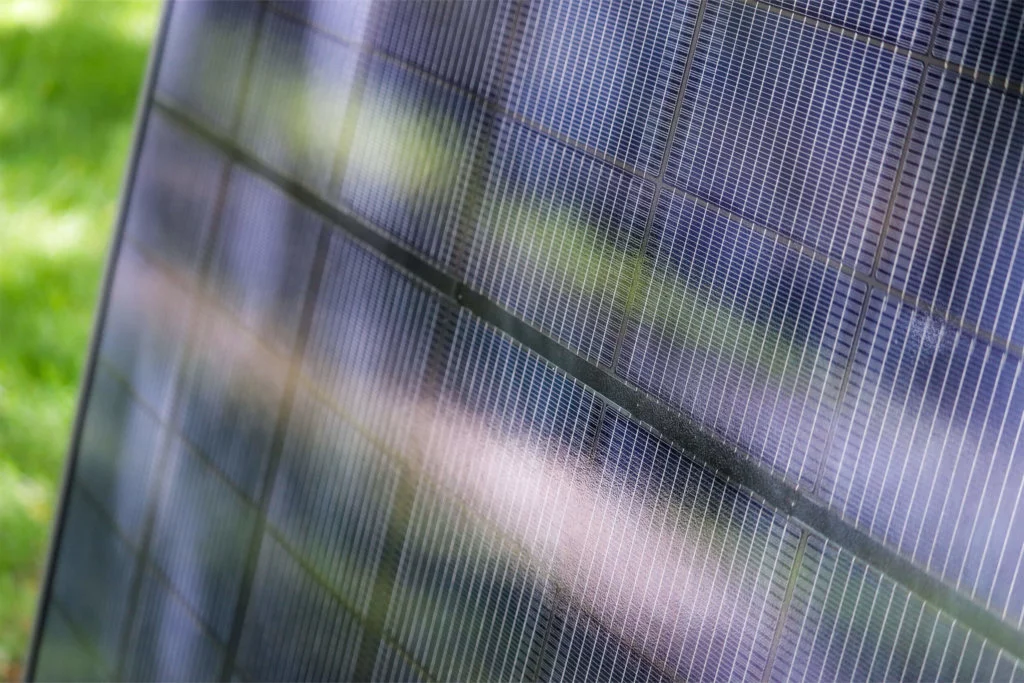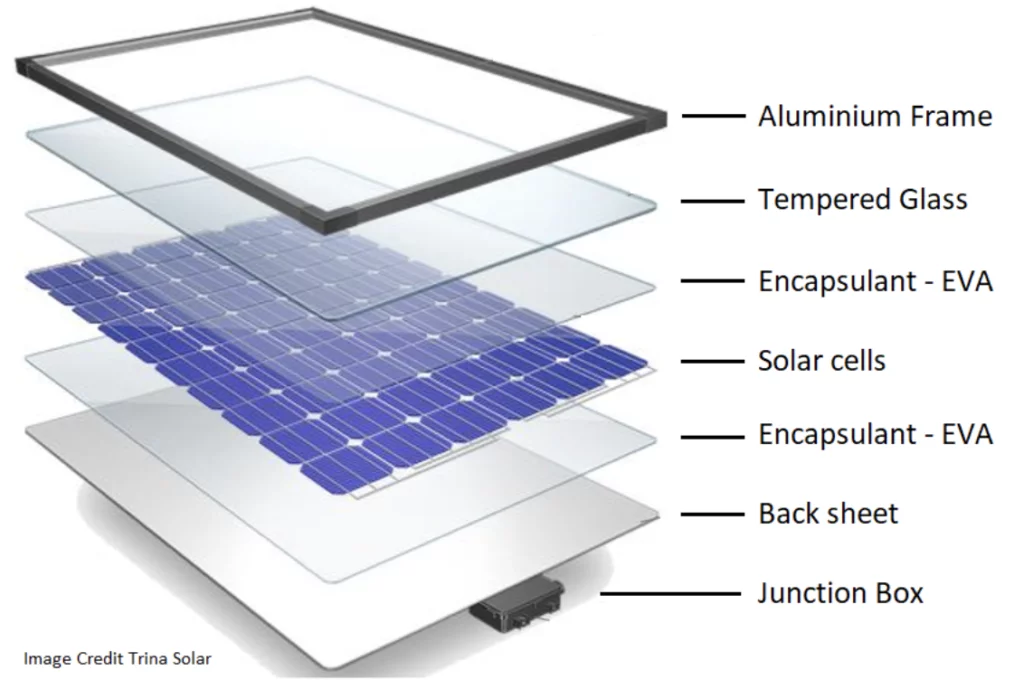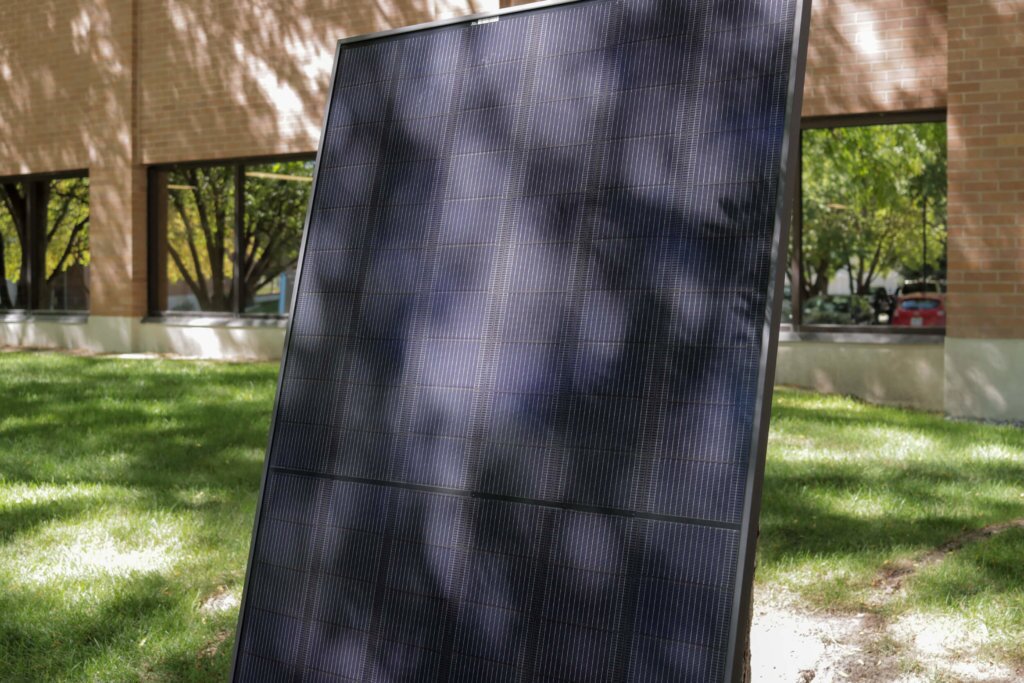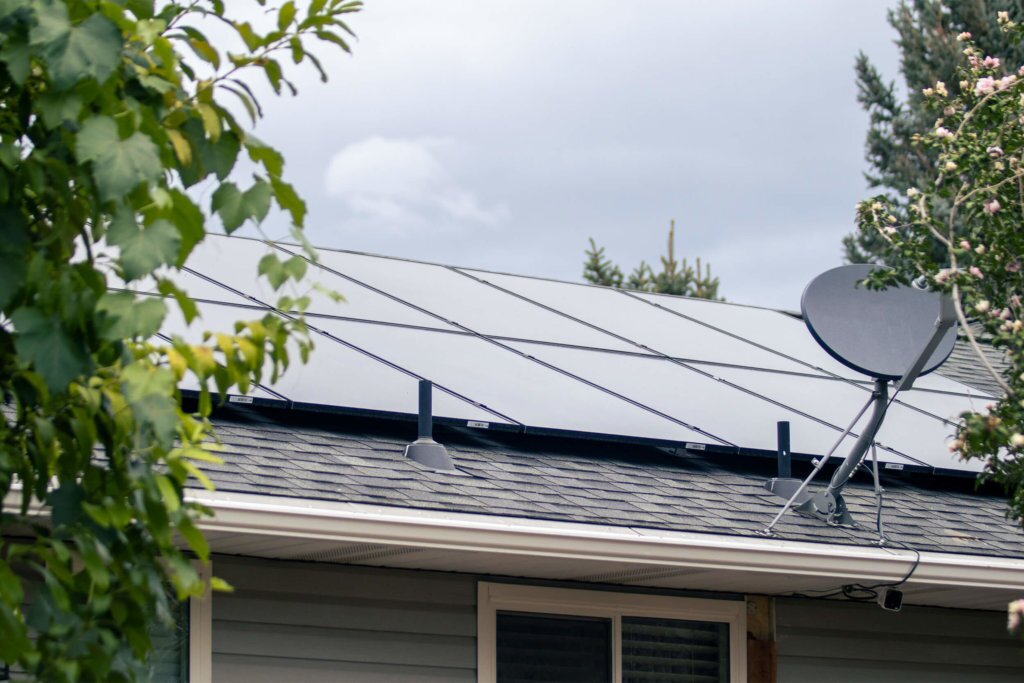

For thousands of years, humans have harnessed the power of the sun. Initially, solar power was used to produce thermal energy like heat or fire, even creating weapons through sunlight in Ancient Greece. In the late 1800’s, scientists finally started to understand solar energy — its details and discovered light from the sun produces electricity when exposed to specific elements like selenium or silicon.
With more research, the world’s first silicon photovoltaic (PV) cell was created in 1954 by scientists Daryl Chapin, Calvin Fuller, and Gerald Pearson. This cell was the first to power an electrical device for several hours at a time. Though it was relatively inefficient and small, scientists used this advancement and ran with it. Using the original 1954 panel as a foundation, solar panel technology became more efficient with every passing year, steadily increasing in popularity and decreasing in price. This leads us to answer the question: How are solar panels made?
What is in a Solar Panel?
To understand how a solar panel is made, we must first recognize the key components of this renewable energy source. A solar panel is made up of several layers:
- An aluminum frame
- A sheet of tempered glass
- A layer of EVA film (aka highly transparent plastic)
- Solar cells
- Another layer of EVA film
- A back sheet
- A junction box
Each layer plays an important role in protecting the solar cells from moisture, dirt, impact, and high wind speeds. This specific combination of layers allow the solar cells to capture light and produce energy. Over the last 60 years, this layering technique has been perfected, and today, solar panels can produce electricity efficiently for over 25 years, giving homeowners years of savings and creating less strain on the environment.

Phases of Manufacturing Solar Panels:
Since we’ve reviewed the distinct layers of a solar panel, it is easier to understand how everything comes together when it is manufactured. To simplify the complex process of building a solar panel, here is the process in six phases:
Phase 1: Sand to Silicon
The creation of a solar panel revolves around its most essential component: solar cells. For most panel types, the solar cell is a layer of silicon. The first step of manufacturing a solar panel is finding the raw material to create a thin sheet of silicon cells. Solar panel manufacturers use quartz sand to extract the highest purity silicon. By exposing the sand to very high temperatures in an arc furnace, the impurities are burned away, and large silicon rocks are left exposed.
Phase 2: Silicon Rocks to Cylindrical Ingots
To break these large silicon rocks into large, cylindrical ingots (blocks), the factory turns again to heat. Manufacturers melt down the silicon rocks in a cylindrical furnace, aligning silicon atoms in the desired structure and orientation. Boron is also added to the melted silicon to give a positive electrical polarity.
Phase 3: Ingots to Disks
With silicon in the form of a cylinder, workers use wire saws to cut the cylinders into disks or wafers depending on the type of panel. These paper-thin pieces are very shiny, causing them to reflect light. To negate reflection and maximize sunlight absorption, each piece is soaked in an anti-reflective coating before the next phase.
Phase 4: Wafer to Solar Cell
After being coated and treated, these disks are now ready to become solar cells. Metal conductors are added in a grid-like matrix on the surface of each piece, ensuring the conversion of solar energy into electricity. These solar cells are placed in an oven-like chamber where phosphorus is diffused in a thin layer over them. The phosphor layer allows the surface of each cell to carry a negative electrical orientation, making a positive – negative junction between surface and contents of the cell.
Phase 5: Solar Cell to Solar Panel
Solar cells are linked by soldering a metal connector between each cell, forming 48, 60, or 72–cell panels. The panels then receive their protective layering of a back sheet, EVA film, tempered glass, and an aluminum frame. These parts ensure every piece is safely positioned, protected from the elements, and can be mounted on a home by an installer. The junction box is added to connect the panel to the module, allowing electricity to flow from the panel to the home.
Phase 6: Factory to Home
Before solar panels are shipped out to major distributors and homes, each solar panel is tested to check if the solar cells perform as expected. Once the test is passed, solar panels are cleaned, inspected again, and then shipped out.
For a more in-depth explanation and visual representation, watch the video below:

What is the Lifespan of a Solar Panel?
Solar panels can efficiently produce electricity for up to 25 years, but many remain operational for longer. Some of the first modern solar panels have been in operation for nearly 60 years! Due to the refining process of how solar panels are constructed, they lose efficiency extremely slowly. Some experts estimate solar panels will still operate at 80% efficiency around years 20-25. (For a more in-depth discussion of how long you can expect your panels to last, check out How Long Will My Solar Panels Last?)
After a few decades of running, though, anyone owning a solar panel system may need to reassess their power needs. It is likely after the first 25 years, your lifestyle has changed. If it turns out old panels are not meeting your new power needs, they may need to be replaced or new panels added next to them.
Recycling Solar Panels
When a solar panel gets replaced, most parts can be recycled. Old panels go to a recycling facility where they are pulled apart and broken down with acids to separate out the crystalline silicon, which is the semiconducting material in most photovoltaic cells. Acidic hydro-metallurgical systems are used to separate any precious minerals.
Nearly 75% of the material that gets separated out in the recycling process is glass, which is easy to recycle into new products. Other materials like copper and silver can be recycled as well, so the entire process is clean and renewable. In fact, solar energy is one of the cleanest ways to produce energy and has become so popular.
Solar energy is a source of power requiring little space (a rooftop) and minimal maintenance. It produces no greenhouse gases. All around, solar is a green option at an important juncture regarding energy threats like climate change.

Why Install a Solar System?
Apart from the reasons listed above, solar panels provide great value to anyone installing them. Once a solar panel is installed on a customer’s home, they can look forward to decades of useful renewable energy offsetting their power consumption. They can save money and, in the case of overproduction, even sell it back to the grid for a profit depending on how the public utility accounts for surplus in their area. There are so many benefits to going solar, and so many ways it has become accessible to homeowners, all over the country.
The Solar Panels Blue Raven Solar Recommends
Blue Raven Solar works with third-party providers allowing us to put the most efficient solar panels on our customers’ homes. We strive to improve homeowners’ lives by increasing their reliance on clean and abundant renewable energy.
We recommend homeowners own their solar panels instead of renting them—since it provides the most savings. A power purchase agreement (PPA) and leasing agreement are methods of getting solar panels installed, but they do not help the customer in the long run. Savings from renting solar equipment do not make up for the cost of having a different solar company deciding power prices.
When a customer owns their solar system, they own their savings. This does not exclusively involve the monthly electricity bill, either. Owning solar panels also opens the savings gained from federal and state tax incentives and credits. Renting solar panels means those benefits go to the company who installed them rather than the customer using the system.
At Blue Raven Solar, we want our customers to trust our information, so we are as transparent as possible. Our customers learn how much they will save and how big their solar system needs to be to maximize solar savings. By providing a world-class customer experience Blue Raven Solar wants to be a partner you can trust.
We believe solar energy has the potential to change the world, and we are proud to be part of the movement in several states across the nation. You can start your journey with us by requesting a free quote!



Sorry, the comment form is closed at this time.